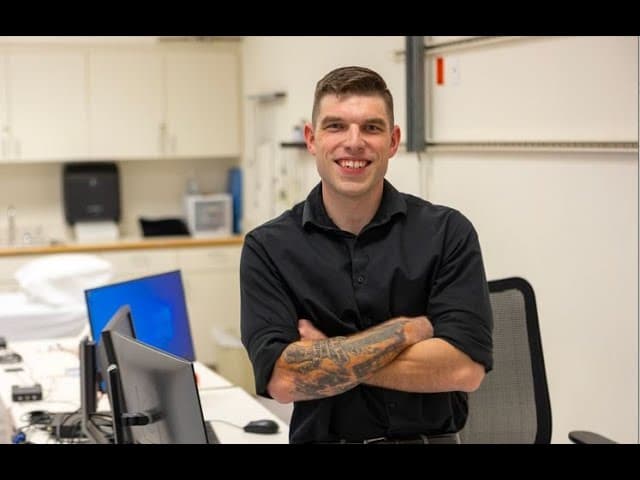Changing the Trajectory of Young Athletes Lives Through Research, Technology and Treatment

Changing the Trajectory of Young Athletes Lives Through Research, Technology and Treatment
[Shriners Children's Northern California logo]
Speaker 1:
A motion analysis lab is a clinical assessment lab that takes motion capture data, ground reaction force data, and electromyography or motor control data, and integrates all of that into a multidisciplinary report that's used for informing surgical decision making, physical therapy optimization, and treatment best practices for each individual patient. So right now we're sitting in a lab that's got 12 cameras mounted all across the top of the ceiling here. Those cameras are shooting near infrared light down into the space and are looking for any sort of reflective material to bounce that light back into the cameras. So with those cameras operating at anywhere between 120 and 250 frames a second, we put these reflective dots called markers on different anatomically relevant parts of the body.
So if I wanted to track the knee motion of a patient, I would put a couple of markers on the knee joint itself to try to define that joint, and then I would place a couple of markers on the tibia of the patient for the lower leg of the patient and the femur, the upper part of the leg, and then I would track all of those markers as the patient moves, does different sport maneuvers, and then the motion of those markers relative to each other lets me back out what the knee is doing at any point in time. In addition to that motion capture data, the tracking of those trajectories through space, we also have instrumented panels in the floor that record the forces that the ground is pushing back up on the patient as they move.
So the ground reaction force data tells a little bit more about how the patient is interacting with the ground. And when you combine that with the motion capture data, you're able to back out the forces in the torques that are developed at the hip, the knee and the ankle. From a clinical perspective, I wouldn't be able to do this if this wasn't for the generosity and the continued support of the Shriners Hospital system. Deeply appreciative of how much investment the Shriners Hospital network has put into this lab to allow us to look at sports medicine as a future clinical service for not just the patients here in Northern California, but across the Shriners network. We have an opportunity to make some really impactful changes in surgical decision making, in physical therapy optimization. We really have a chance to make a big difference in a lot of kids' lives.
[Shriners Children's Northern California logo]